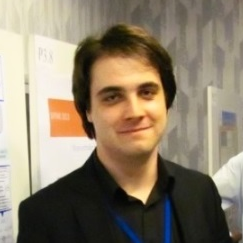Advances in Radio, Visible Light Communications, and Fiber Optics
A special issue of Electronics (ISSN 2079-9292). This special issue belongs to the section "Microwave and Wireless Communications".
Deadline for manuscript submissions: closed (31 August 2023) | Viewed by 14338
Special Issue Editors
Interests: image processing; audio processing; adaptive systems; multimedia forensics; embedded systems; electronic circuits; Visible Light Communications
Interests: software defined networking; Internet of Things; network data analytics; precision agriculture; environmental management
Interests: switching-mode power converters; the use of wide bandgap semiconductors in power converters; light-emitting diodes drivers for visible light communication and power-supply systems for RF amplifiers
Special Issues, Collections and Topics in MDPI journals
Special Issue Information
Dear Colleagues,
The effervescence of the communication field is growing, especially with the maturation of technologies that use visible light as the information carrier, complementing the use of radio and fiber optics. Radio communication advances in the context of 5G/6G are complemented by the major advantage of visible light communications (VLC) in using LEDs as emitters, therefore potentially transforming ambient and utility lighting systems into communication devices, resulting in an environment filled with challenges, which is currently under intense research. Smartphone cameras are becoming increasingly advanced, capturing a high number of frames per second or featuring very fast shutter speeds, contributing to the development of optical camera communication (OCC) systems based on mobile devices. This mixed communication infrastructure, based on the three pillars of radio, visible light communications and fiber optics, is a strong foundation for new Internet of Things (IoT) scenarios.
The main objective of this Special Issue is to provide original and high-quality contributions that address both theoretical and practical aspects of systems development in radio communications, optical communications (OC), visible light communications, optical camera communications (OCC) and the Internet of Things (IoT). It will highlight state-of-the-art research and innovative applications and provide new perspectives for future initiatives and challenges.
The topics of interest include but are not limited to:
- New applications of radio/OC/VLC/OCC systems;
- Video processing for OCC;
- Visible light positioning (VLP);
- V2X/IoT/smart city systems;
- Electronic circuits for modulation/demodulation;
- Efficient driver and receiver design, noise characterization;
- Security issues for radio/OC/VLC/OCC/IoT;
- Machine learning strategies for VLC/OCC;
- Information theory for VLC;
- Coding and modulation for VLC;
- Efficient signal processing for VLC;
- Underwater VLC systems;
- Diversity/MIMO technique implementation.
Dr. Robert Alexandru Dobre
Dr. Declan T. Delaney
Dr. Juan Rodríguez Méndez
Guest Editors
Manuscript Submission Information
Manuscripts should be submitted online at www.mdpi.com by registering and logging in to this website. Once you are registered, click here to go to the submission form. Manuscripts can be submitted until the deadline. All submissions that pass pre-check are peer-reviewed. Accepted papers will be published continuously in the journal (as soon as accepted) and will be listed together on the special issue website. Research articles, review articles as well as short communications are invited. For planned papers, a title and short abstract (about 100 words) can be sent to the Editorial Office for announcement on this website.
Submitted manuscripts should not have been published previously, nor be under consideration for publication elsewhere (except conference proceedings papers). All manuscripts are thoroughly refereed through a single-blind peer-review process. A guide for authors and other relevant information for submission of manuscripts is available on the Instructions for Authors page. Electronics is an international peer-reviewed open access semimonthly journal published by MDPI.
Please visit the Instructions for Authors page before submitting a manuscript. The Article Processing Charge (APC) for publication in this open access journal is 2400 CHF (Swiss Francs). Submitted papers should be well formatted and use good English. Authors may use MDPI's English editing service prior to publication or during author revisions.
Keywords
- wireless communications
- Internet of Things (IoT)
- optical communications (OC)
- visible light communications (VLC)
- optical camera communications (OCC)
- electronic design







